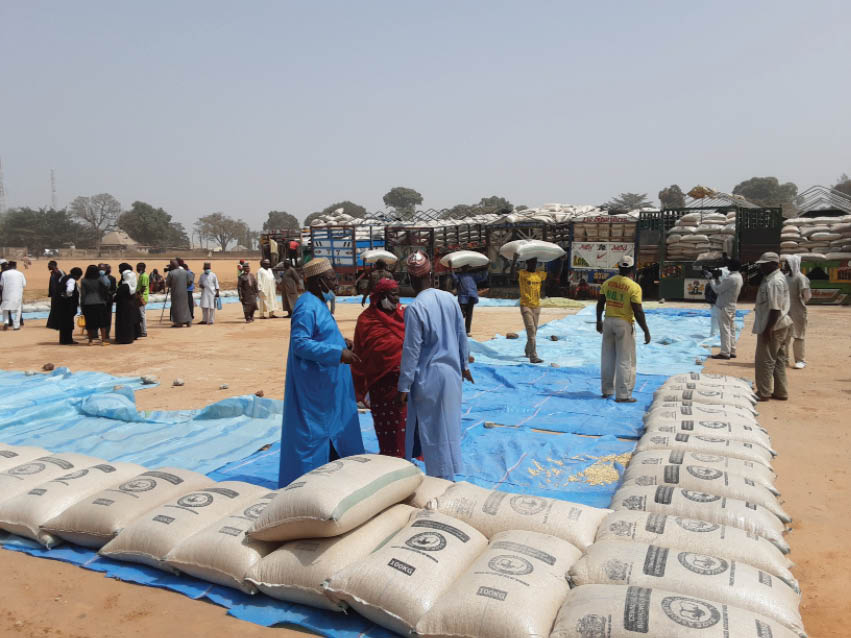Maize farmers setting up pyramids in Kaduna
The Maize Association of Nigeria (MAAN) is moving thousands of metric tonnes of maize to Kaduna, the capital of Kaduna State to set up pyramids. The pyramids are part of the activities lined up to celebrate their 30th anniversary, which will be held in the first week of March this year. Many loaded trucks were […]

Maize pyramids underway in Kaduna
The Maize Association of Nigeria (MAAN) is moving thousands of metric tonnes of maize to Kaduna, the capital of Kaduna State to set up pyramids.
The pyramids are part of the activities lined up to celebrate their 30th anniversary, which will be held in the first week of March this year.
Many loaded trucks were bringing in maize cultivated under the Central Bank of Nigeria’s Anchor Borrowers’ Programme (ABP) from the 21 maize growing states under the 2021 rain-fed season.
Although the MAAN did not mention the quantum of maize to form the pyramids, an official said the availability of space at the Eid prayer ground, Angwan Sarki, would determine the quantity of the maize and the size of the pyramids.
Speaking with journalists at the flag-off of the pyramids in Kaduna on Wednesday, Joseph Bamidele, an engineer and coordinator of the ABP for the MAAN, said the pyramid was to showcase the successes the farmers had achieved in maize production in this country.
Dr Bello Abubakar, the president of the Maize Association of Nigeria, described the formation of the maize pyramids as “the second national pyramid ever in Nigeria and Africa.”
He said the farmers “want to set up this pyramid to showcase the success and achievement of the Anchor Borrower Programme under President Muhammadu Buhari.
“Also, we want to showcase what we have done and acknowledge what Mr President has done for maize farmers in Nigeria. We also want to show the effort and appreciation of all maize farmers in Nigeria.”
Abubakar stressed that the number of pyramids would be determined by the space they have, adding that the maize to be used to set up the pyramids came from the loan repayment for the 2021 wet season.
Speaking on the issue of high price of grains in the market, he said it was something that did not only affect Nigeria, but a global issue, adding that if one looks at the statistics of the Food and Agriculture Organisation (FAO), it had predicted high price of food commodities by the end of 2021.
“The price of maize is even better than the prices of other commodities. It is a global issue, it is not only in Nigeria,” he said.
On the factors that contribute to the high prices he said, “One factor that contributed to the high cost of maize is COVID-19 in 2019 and 2020. There was scarcity of inputs that farmers needed. Even mechanisation equipment were scarce due to COVID-19. What a farmer would buy at N1,500 has gone up N4,000. And the cost of production has increased significantly.
“Before this administration came in 2015, we only had 8 million tonnes of maize, but by the end of 2020, it was 20 million tones. Apart from that, farmers now have access to inputs without their money but as a loan; they get the technology under the ABP,” he added.
Answering questions on the productivity of farmers, the MAAN president said, “Where farmers were getting 20 metric tonnes of maize, they are now getting 50. There is a new technology of farming. And there are extension services under the ABP, as well as mechanisation, monitoring and evaluation. The farmers are benefiting, and they have increased their production.
“The maize mills we have in the country have increased. The processors have more companies now, so they employ more people. These are the success stories of the ABP. In one season, more than one million people get jobs under the programme.”
